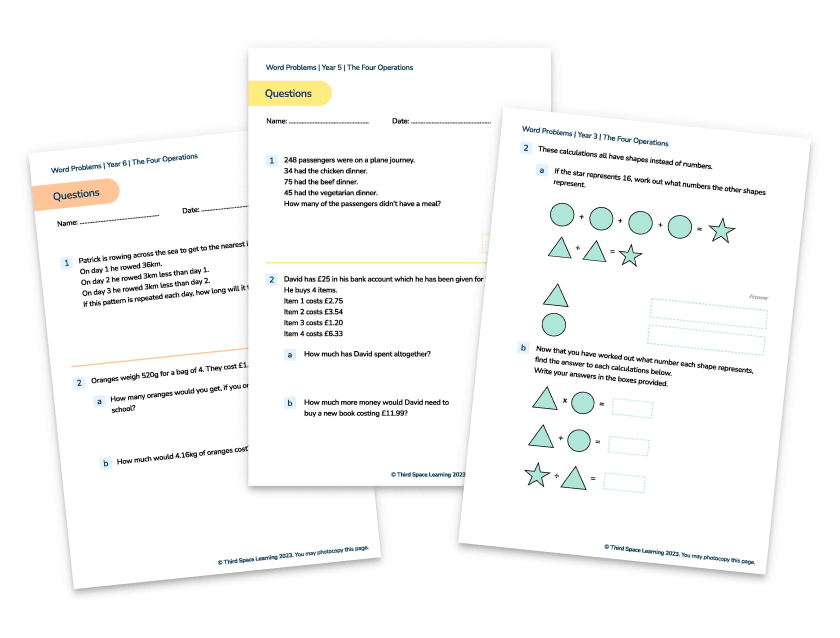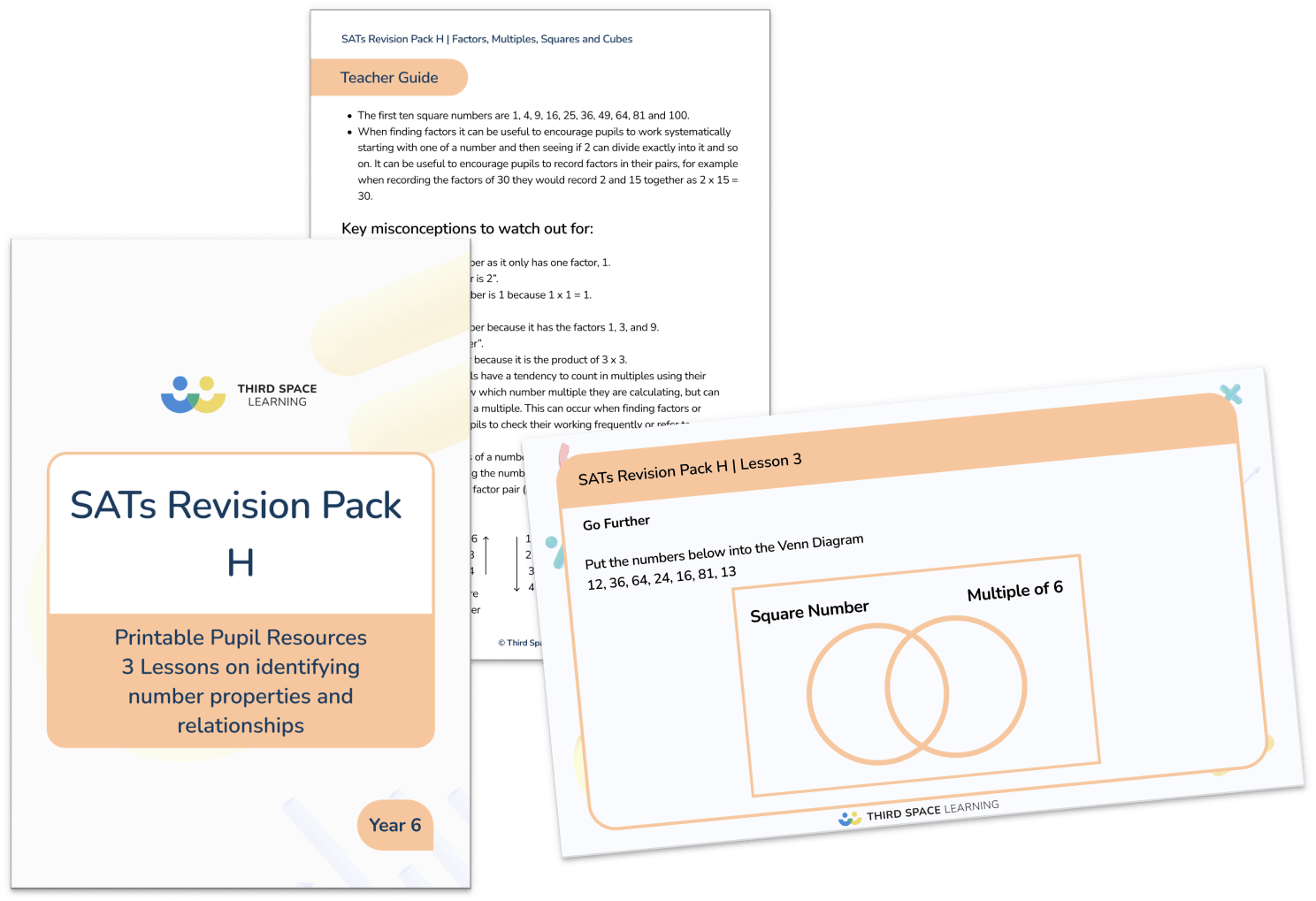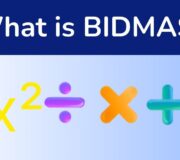What Is The Highest Common Factor?: Explained For Primary Schools
In this post, we will be answering the question “what is the highest common factor?” and providing you with all of the information you need to help your students understand this area of maths. We’ve also got some questions based around the Highest Common Factor that students can complete.
FREE Factors, Multiples, Square & Cube Numbers Pack
Download this resource pack aimed at helping pupils identify number properties and relationships in advance of SATs. It includes teaching guidance, pupil practice sheets and activity slides.
Download Free Now!What is a factor in maths?
Factors are numbers that fits exactly into other number. For example, 5 is a factor of 10; 7 is a factor of 28. One way of helping children remember factors is to think of factories – factories make things, and factors make up numbers.
Another way is to think of them in pairs (factors are friends – they come in pairs!); for example, 5 x 2 = 10, so 5 and 2 are factors of 10; 7 x 4 = 28, so 7 and 4 are factors of 28. There are 8 factors of 24: 1, 2, 3, 4, 6, 8, 12 and 24 (1 x 24, 2 x 12, 3 x 8 and 4 x 6). Factors are whole numbers rather than decimals.
Children often confuse factors with multiples, so it is important they learn about the difference between factors and multiples.
What is a common factor?
A common factor is a factor that is shared by multiple numbers. 7 is a common factor of 14 and 21, as it fits exactly into both. Another example would be the common factors of 8 and 12 which are 1, 2 and 4.
A visual way to see common factors is by using factor trees for each of the numbers you are trying to find common factors for. This will allow you to see both the larger numbers and smaller numbers which are common. Another method is writing out each of the factors for the given numbers and underlining any factors which are common.
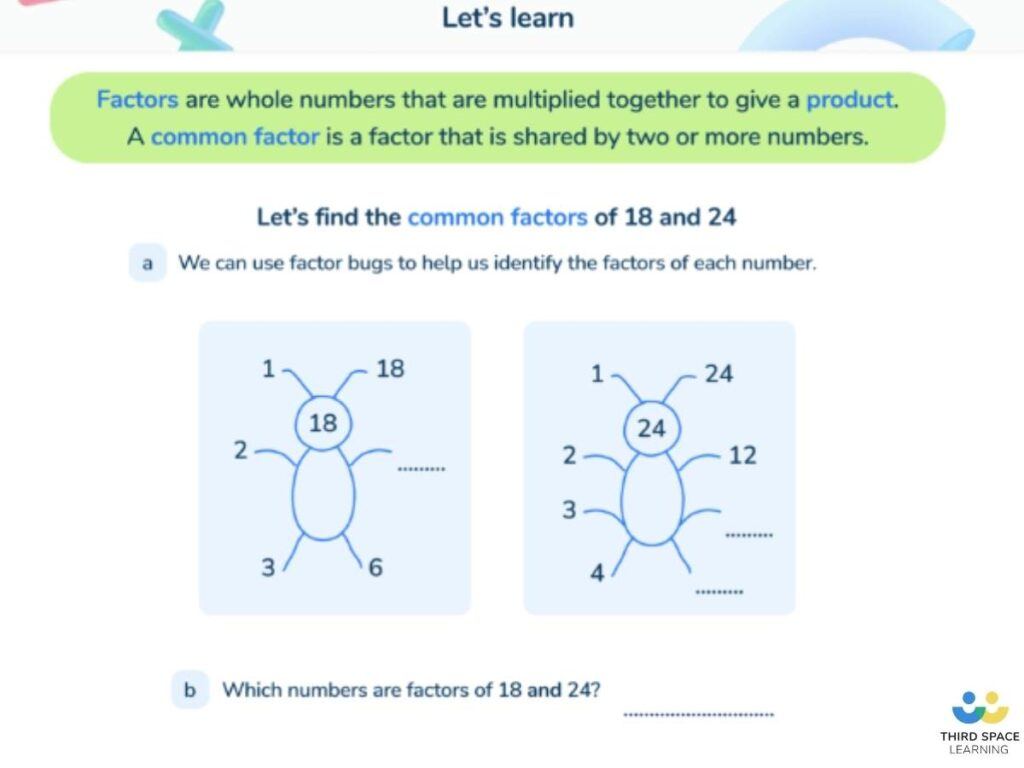
What is the highest common factor?
The highest common factor is the largest whole number which is shared by given numbers. For example, common factors of 10 and 20 are 1, 2, 5 and 10, but the highest of those is 10; therefore, the highest common factor of 10 and 20 is 10. Other terms can sometimes be used, mainly greatest common factor (GCF) and greatest common divisor (GCD).

Unlimited primary maths tutoring with Skye, the voice-based AI maths tutor.
Built on the same principles, pedagogy and curriculum as our traditional tutoring, but with more flexibility, reach and lower cost.
Join the schools already helping hundreds of primary pupils nationwide with Skye’s one to one maths tutoring.
Watch Skye in actionHow to find the highest common factor
One quick and easy way of helping children to find the highest common factor is to ask them to list the factors of each number, underline all the common factors and then find the largest number. For example, the HCF of 18 and 24 is 6:
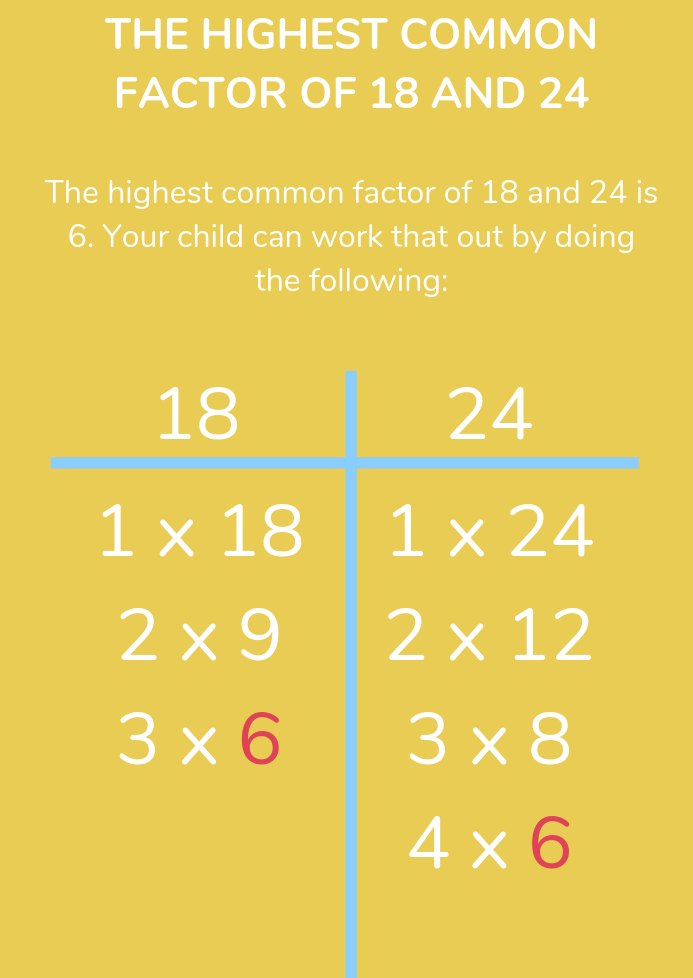
Another example is that the highest common factor of 21, 36 and 42 is 3:
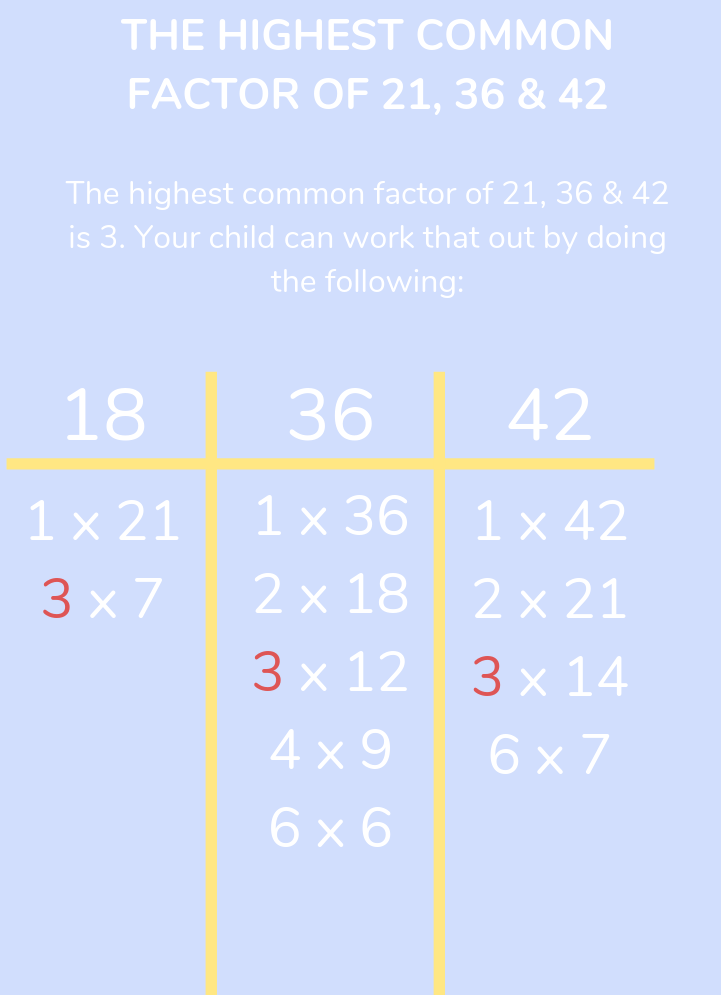
When will my child learn about the highest common factors?
Factors are introduced in Year 4. The national curriculum states that Year 4 pupils should be taught to recognise and use factor pairs. The non-statutory guidance suggests that pupils use factors and multiples to recognise equivalent fractions and simplify where appropriate (for example, 6/9 = 2/3 or 1/4 = 2/8).
This is then extended to common factors in Year 5. The national curriculum states that Year 5 pupils should be taught to identify factors, including finding all factor pairs of a number, and common factors of two numbers and solve problems involving multiplication and division including using their knowledge of factors.
In Year 6, children are expected to apply their knowledge of common factors to fractions. The national curriculum states that Year 6 pupils should be taught to identify common factors and use common factors to simplify fractions. The non-statutory guidance also suggests that common factors can be related to finding equivalent fractions.
Take a look at our multiplication worksheets that cover all areas of multiplication including long multiplication, factors and multiples.
How do the highest common factors relate to other areas of maths?
The highest common factors are useful when simplifying and comparing fractions. If you can work out the highest common factor of the numerator (top number) and the denominator (bottom number), you can express the fraction in its simplest form (a skill required in Year 6).
For example, to simplify 18/24, we divide by the numerator and denominator by the HCF of 18 and 24 (6) to get 3/4.
Highest Common Factor Practice questions
1) Calculate the highest common factor of 24 and 36.
2) Complete this sentence: Every number with a factor of 10 must also have factors of ? and ? and ?.
3) Write all the factors of 30 which are also factors of 20.
4) Use your knowledge of the highest common factors to express 48/60 in its simplest form.
Wondering about how to explain other key maths vocabulary to your children? Check out our Primary Maths Dictionary, or try these primary maths terms:
There are plenty of worksheets, tutorials and interactive resources for teaching the highest common multiples (HCF), lowest common multiples (lcm), common prime factors, prime numbers and more on the Third Space Learning Maths Hub.
DO YOU HAVE STUDENTS WHO NEED MORE SUPPORT IN MATHS?
Skye – our AI maths tutor built by teachers – gives students personalised one-to-one lessons that address learning gaps and build confidence.
Since 2013 we’ve taught over 2 million hours of maths lessons to more than 170,000 students to help them become fluent, able mathematicians.
Explore our AI maths tutoring or find out about online maths tuition for your school.
